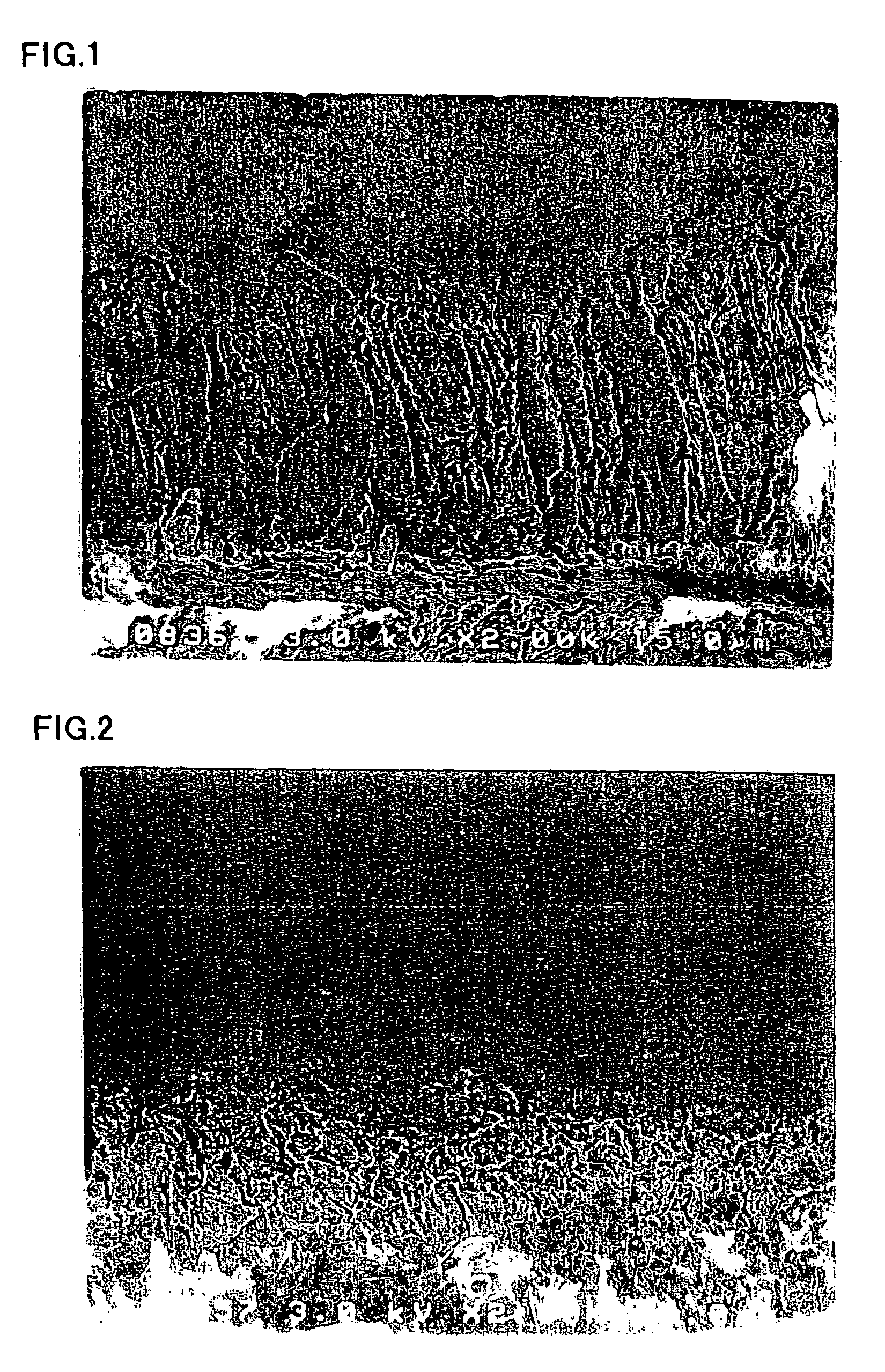Lithium secondary battery
a lithium battery and secondary battery technology, applied in the direction of non-aqueous electrolyte cells, cell components, electrochemical generators, etc., can solve the problem that the relationship between non-aqueous electrolyte and charge-discharge cycle characteristics of rechargeable lithium batteries using such electrodes has not been fully investigated, and achieves the effect of improving adhesion
- Summary
- Abstract
- Description
- Claims
- Application Information
AI Technical Summary
Benefits of technology
Problems solved by technology
Method used
Image
Examples
Embodiment Construction
[0056]The present invention is below described in more detail by way of Examples. It will be recognized that the following examples merely illustrate the practice of the present invention but are not intended to be limiting thereof. Suitable changes and modifications can be effected without departing from the scope of the present invention.
[0057](Fabrication of Negative Electrode)
[0058]An electrolytic copper foil (18 μm thick, surface roughness Ra=0.188 μm) was used as a current collector. A silicon thin film was deposited on this electrolytic copper foil by an RF sputtering technique. Sputtering was achieved at a sputter gas (Ar) flow rate of 100 sccm, an ambient substrate temperature (not heated), a reaction pressure of 0.133 Pa (1.0×10−3 Torr) and 200 W RF power. The silicon thin film was deposited to a thickness of about 5.5 μm. The resulting silicon thin film was analyzed by Raman spectroscopy which revealed the presence of a peak around 480 cm−1 and the absence of a peak aroun...
PUM
| Property | Measurement | Unit |
|---|---|---|
| surface roughness Ra | aaaaa | aaaaa |
| surface roughness | aaaaa | aaaaa |
| surface roughness | aaaaa | aaaaa |
Abstract
Description
Claims
Application Information
 Login to View More
Login to View More - R&D
- Intellectual Property
- Life Sciences
- Materials
- Tech Scout
- Unparalleled Data Quality
- Higher Quality Content
- 60% Fewer Hallucinations
Browse by: Latest US Patents, China's latest patents, Technical Efficacy Thesaurus, Application Domain, Technology Topic, Popular Technical Reports.
© 2025 PatSnap. All rights reserved.Legal|Privacy policy|Modern Slavery Act Transparency Statement|Sitemap|About US| Contact US: help@patsnap.com



